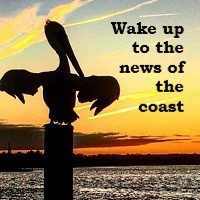
Part of a series on pollinators.
Spring is the time of year when things start growing and blooming. It’s also when pollinators like bees come out and get to work.
Sponsor Spotlight
An awareness campaign called “No Mow May” is urging people not to mow their lawns this month, or even this whole season, as a way to help make sure that these pollinators have enough to eat. Many of the small flowers that pop up in the spring can provide a critical food source for bees. Mowing these blooms robs the bees of this potential sustenance.
Bees are critical to the health of our ecosystems, but they are also in trouble.
Wild bee populations have experienced substantial declines due to factors including urbanization, pesticides and undiversified agriculture. Increased urbanization has led to the fragmentation of pollinator habitat — a widening in the space between areas where bees can find food or live. Without bees, our food system would never be the same.
“(When) we think of habitat loss, we think of forests being logged and things being plowed and built on,” said Matthew Shepherd, director of outreach and education for the Xerces Society of Invertebrate Conservation. “But then, every acre of featureless grass is just as much loss of habitat as anything else.”
Sponsor Spotlight
History of the Green Lawn
The American attachment to the perfectly trimmed green lawn aesthetic has a history rooted in settler colonialism. Americans modeled their landscaping after wealthy European elites, who used a pure grass lawn as a way to signal their wealth.
This thing that originated as a status symbol is now a hallmark of the American backyard. Despite that it is an extremely common sight now, most green turf grasses are not native to the United States. Therefore, they can require a lot of upkeep — excessive water, pesticides — to keep them going.
Covering 40 million acres across the country, grass is now the biggest irrigated “crop” in the U.S. — surpassing even corn. And yet, it gives little to nothing back to native ecosystems.
No Mow May
Green grass lawns, in effect, extend the fragmentation of pollinator habitat. That’s why Plantlife in the United Kingdom started the awareness campaign, No Mow May. This movement has also taken hold in the U.S. The idea is that not mowing your lawn for even a month can allow for the growth of things like clover that bees can use for food.
Of course, not mowing your lawn can present issues, such as enforcement of local ordinances, or even just the local status quo. There are homeowner associations bylaws and legal prohibitions on any deferred lawn maintenance that could be characterized as overgrowth.
Related: Celebrate pollinators Saturday during World Bee Day
Facing ordinances like this, some U.S. residents have challenged the idea of what a yard should look like. In Maryland, one couple pushed back on an HOA requirement and it resulted in legislation that prohibits unreasonable restrictions on low-impact landscaping such as a pollinator-friendly yard.
Beyond May
Ultimately, said Shepherd, No Mow May should ideally serve as a springboard for a more comprehensive conversation about making spaces pollinator friendly all year round. Shepherd said there are three things you can focus on: creating nesting areas, flowers for food, and quitting pesticides.
If all you’re doing is not mowing your lawn for a few weeks, said Shepherd, you’re not achieving any long-term benefit. Because if you don’t have any blooming flowers in your lawn, you’re just growing long, green grass. And if you do, teaching bees that there’s a food source in your yard and then taking it away can be harmful. So ultimately, true support for pollinators has to go beyond the campaign.
“The real benefit from (No Mow May) is that people are talking about lawns — they’re talking about the bad things of lawns, how the lawns could be, what the changes can be,” Shepherd said. “And we’re seeing a much broader conversation about pollinator conservation in our neighborhoods, and what we really should be doing to support the bees.”
Advocates say focusing on native, flowering plants is also a good idea, as is spreading awareness to other people in your community and beyond. Critically important is eliminating things from your yard, like grass, that might require regular pesticide applications.
“Anything we can do to bring habitat back into our neighborhoods, our towns, our farmland and so on, is going to be beneficial,” Shepherd said.
After May wraps up, June is National Pollinators Month. Follow along for more in this series about pollinators.








